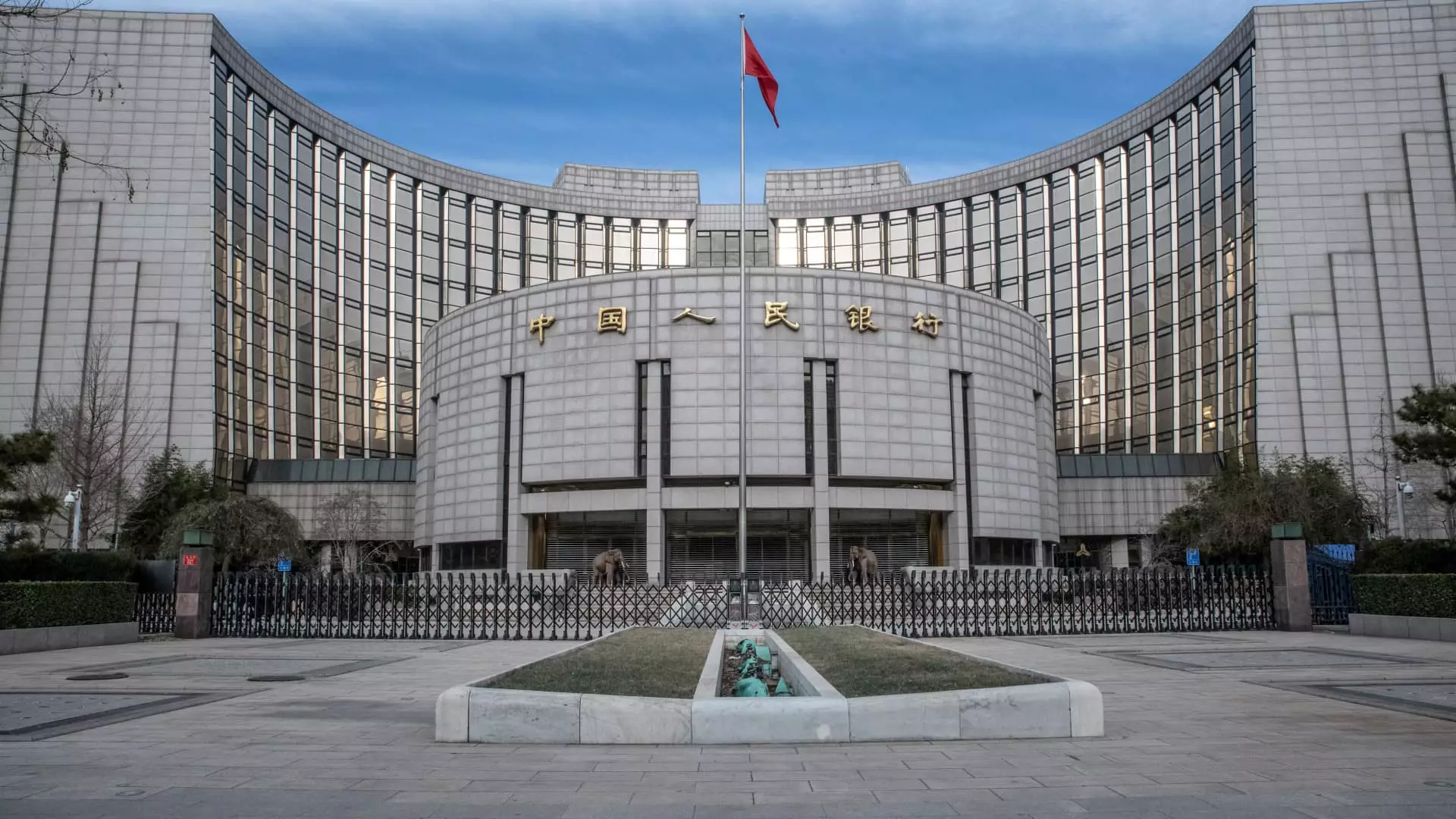The People’s Bank of China (PBOC) recently announced that it would maintain its key lending rates for the foreseeable future. The 1-year loan prime rate (LPR) stands at 3.1%, while the 5-year LPR remains at 3.6%. This decision comes in response to ongoing economic challenges and recent government stimulus efforts. While such a move might seem conservative, it illustrates the central bank’s cautious approach in navigating turbulent economic waters.
Market analysts, including Bruce Pang, JLL’s chief economist for Greater China, anticipated that PBOC would refrain from altering these rates at this juncture. Pang suggested that there remains no immediate pressure to readjust the LPR, as Beijing continues to evaluate the effectiveness of its recent economic stimulus initiatives. Indeed, the context surrounding these rates is crucial to understanding China’s broader economic landscape.
The backdrop of this decision lies in the latest economic data, which revealed sluggish growth across several key indicators. Industrial production in China failed to meet expectations, while fixed asset investment growth showcased a worrying slowdown. Most concerning was the steepening annual decline in real estate investments, which reflects the ongoing challenges posed by a faltering property market.
Despite these disheartening figures, retail sales provided a glimmer of hope, reporting a 4.8% increase year-on-year. This uptick hints at the potential effects of the recent stimulus measures, suggesting that while the broader economy struggles, consumer spending might be experiencing a modest revival. This mixed economic narrative places the PBOC in a precarious position as they aim to support growth sustainably.
China’s recent stimulus packages have been substantial, aimed at alleviating local government debt issues and reinvigorating a beleaguered economy. Earlier this month, the Ministry of Finance put forth a significant five-year fiscal package valued at 10 trillion yuan (approximately $1.4 trillion). This ambitious plan is not merely a reaction to current economic woes but also a proactive measure intended to stimulate growth for the coming years.
However, the effectiveness of these stimuli is still questionable. Experts from Morgan Stanley and Goldman Sachs have expressed skepticism regarding the potential for short-term recovery, citing ongoing deflationary pressures and the likelihood of rising trade tensions as significant hurdles. The trajectory for China’s GDP growth is predicted to decelerate, creating an environment fraught with uncertainty for investors and policymakers alike.
The challenges facing the Chinese economy extend beyond domestic financial strategies. The potential for heightened tariffs resulting from geopolitical tensions, especially with the United States, looms as a considerable risk factor. The election of Donald Trump and his administration’s probable inclination towards imposing tariffs could dampen China’s export-heavy economy further.
Amid these multifaceted challenges, the PBOC’s approach to maintaining steady lending rates may be seen as both prudent and necessary. Until the impacts of current stimuli materialize, significant rate cuts are not anticipated in the near term. The central bank’s strategy appears to hinge on a careful balancing act: fostering an environment conducive to growth while preventing excessive inflation or volatility in the financial sector.
As we analyze the current status and forecasts for the Chinese economy, it becomes evident that a cautious approach is warranted. Economic recovery requires time and meticulous policy management, particularly in light of the complexities posed by an ongoing property crisis and a traditional reliance on manufacturing and exports.
The outlook for China’s economic growth remains contingent on both domestic reforms and external geopolitical influences. While some analysts maintain an optimistic view for the equity market moving forward, the trajectory for overall economic health requires careful navigation. Ultimately, China’s leaders must evaluate their stimulus strategies and monetary policies to ensure that they can address both short-term challenges and long-term growth aspirations effectively. The balancing act at play highlights a crucial chapter in China’s economic narrative, where patience and strategy may yield the best outcomes in a volatile global landscape.


Leave a Reply